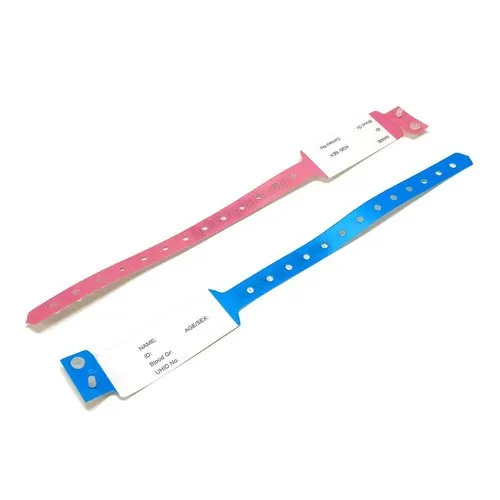Patient Identification Band: Enhancing Correctness and Efficiency in Hospitals
Patient Identification Band: Enhancing Correctness and Efficiency in Hospitals
Blog Article
Just How Patient Identification Band Plays an Important Duty in Patient Monitoring and Care
Patient Identification bands work as a crucial cog in the complex equipment of medical care systems, acting as a guard against medical errors. As the frontline tool for confirming Patient identity, these bands underpin essential processes from providing the appropriate medication to guaranteeing the right person goes through the designated procedure. The profound influence of such a seemingly simple device on Patient security, experience and results may shock lots of, leaving one to consider the possible advancements and innovations that might further boost their efficiency.

Recognizing the Fundamentals of Patient Identification Bands
Regardless of the simplicity of their look, Patient Identification bands offer a vital function in health care settings. They normally present the Patient's full name, day of birth, and an unique Identification number, serving as the main resource of Patient Identification - patient identification band. The use of these Identification bands is taken into consideration a global protocol in health care, intended at making sure Patient safety and security and accuracy of treatment distribution.
The Function of Patient Identification Bands in Decreasing Medical Mistakes
A shocking number of medical mistakes happen due to Patient misidentification, highlighting the important role of Patient Identification bands. These bands, often geared up with barcodes or QR codes, consist of crucial Patient info such as name, age, and clinical history. In high-stress atmospheres where medical employees juggle various duties, Patient Identification bands serve as a reputable and quick recommendation.
Enhancing Patient Safety With Identification Bands

The Influence of Patient Identification Bands on Patient Experience
Nearly all clients in health care settings experience the usage of Identification bands during their treatment trip. These bands, usually worn around the wrist, have an extensive impact on the Patient experience. They offer as a consistent, noticeable pointer of the Patient's identity and medical conditions, ensuring clients that they are recognized and cared for.
Future Advancements and Advancements in Patient Identification Bands Innovation
While present Patient Identification bands have proven effective in enhancing care, the horizon of technical innovations guarantees why not try this out also greater enhancements. RFID tags can give real-time Patient location monitoring, while QR codes can store extensive Patient information easily accessible through smartphone scanning. Hence, future innovations in Patient Identification bands hold substantial potential in changing Patient treatment.
Verdict
Patient Identification bands are a crucial asset in medical care, ensuring accurate Patient Identification and decreasing medical mistakes. These devices enhance Patient safety, increase self-confidence in healthcare systems, and enhance Patient experiences and end results. With the capacity for future innovations in Identification band modern technology, their duty in Patient management and treatment is readied to become also more essential, reinforcing their relevance in the distribution of efficient and safe healthcare.
Just How Patient Identification Band Plays an Important Duty in Patient Administration and Treatment
A staggering number of clinical mistakes happen due to Patient misidentification, highlighting the crucial function of Patient Identification bands. patient identification band.Undoubtedly, the use of Patient Identification bands considerably improves Patient safety in medical care settings. Hence, future technologies in Patient Identification bands hold considerable possibility in reinventing Patient treatment
Patient Identification bands are an essential possession find more in health care, guaranteeing exact Patient Identification and reducing clinical mistakes.
Report this page